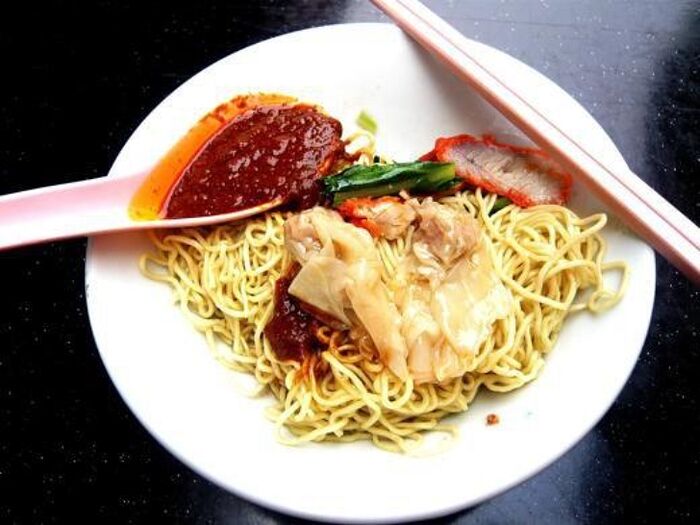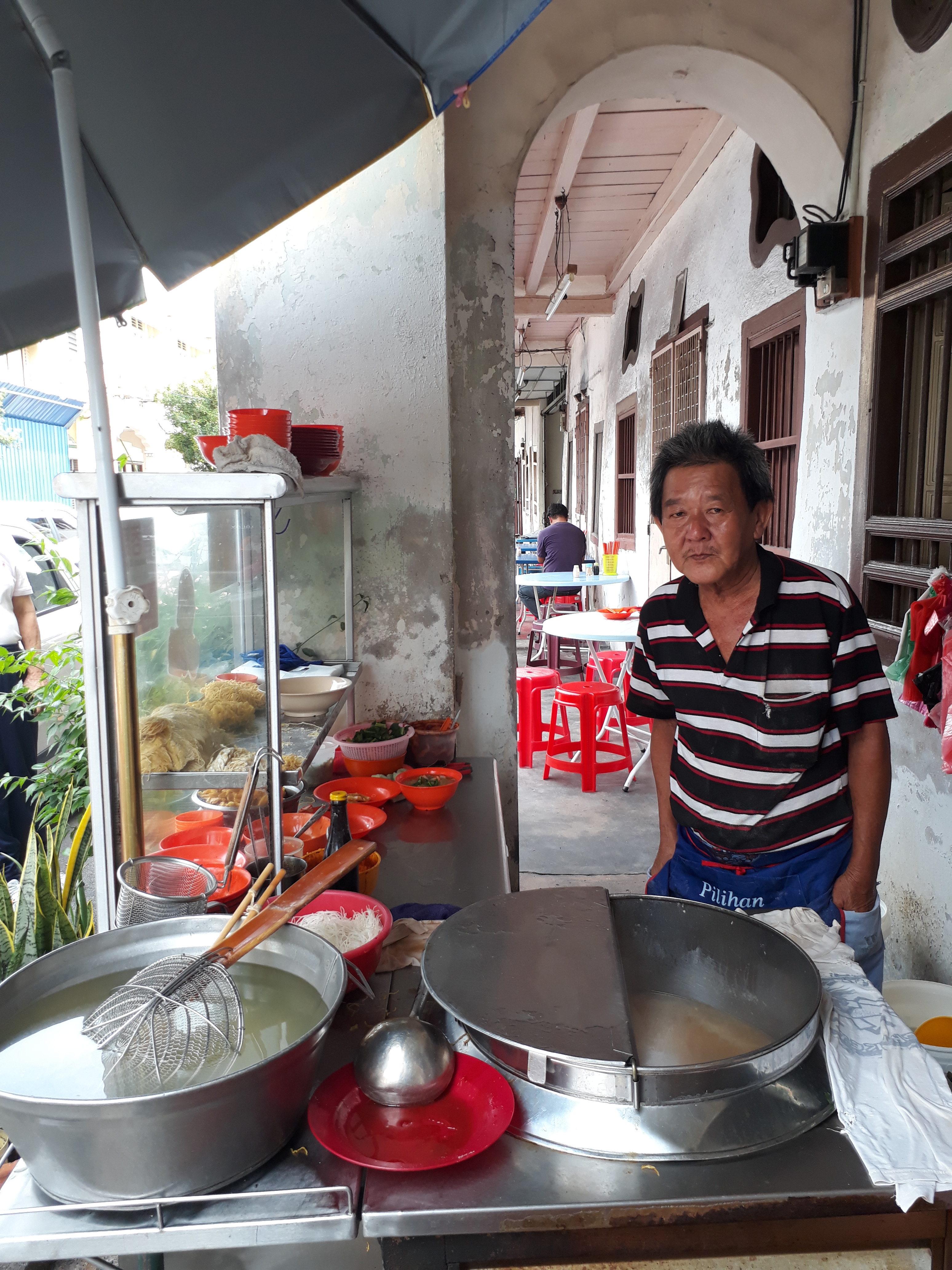Wantan noodles is a quintessential Cantonese breakfast noodle dish which seemed ubiquitous wherever the Cantonese settle. However, variations abound as the Cantonese adapt their noodle dish to suit local palates and culinary practices.
HK-style wantan noodles put great emphasis on the broth, oftentimes guarded like a matter of life-and-death by the different master chefs running the traditional wantan noodle establishments. HK-style wantan noodle broth are the result of boiling prawn shells, chicken bones, pork bones, dried tile fish, dried shrimp eggs (“ha-chi”) and the dried Buddha’s palm vegetable/fruit. Noodles are served al dente, covered in the tasty broth, accompanied by shrimp dumplings: marinated fresh shrimps wrapped in gossamer-thin wantan wrapping, then topped with yellow chives.
Singapore-style wantan noodles is the version I grew up with. Singapore-style often eschews the soup version which characterizes the HK version. Instead, Singapore-style wantan noodles are stretchy (perhaps betraying its strong Hakka influences - the Hakkas outnumber the Cantonese in Singapore), dressed in lard, garlic/shallot oil and very spicy chilli paste. The noodles will be served with char-siew (Chinese BBQ pork) and wantan dumplings. In Singapore, if one asks for the non-spicy version of the wantan noodles, the spicy chili paste will be substituted with tomato ketchup to give the noodles a reddish tinge.
KL-style wantan noodles - my personal favourite version. The noodles are not as toothsome as the HK or Singapore versions. What sets apart KL-style wantan noodles are the blend of dark & light soysauces, oyster sauce, drippings from the char-siew, sesame oil, lard and other condiments used to dress the noodles - also served dry. Poached wantan dumplings will be served in a light soup in a small bowl on the side, topped with chopped scallions (never yellow chives). KL-style wantan noodles do not have chili paste, but pickled green chilis will be provided as a side-condiment, usually drizzled with light soysauce.
Penang-style wantan noodles is very similar to its KL counterpart as it’s served dry and dressed in dark soysauce-based dressing, but is characterised by its al dente-textured noodles, which is closer to the HK wantan noodles. I find Penang-style wantan noodles to be less tasty than the KL version, blander. Penang-style wantan noodles also often include deep-fried (besides poached) wantan dumplings nowadays. In recent years, spicy chili paste is provided besides pickled green chilis (or both).
The version served at this popular 38-year-old wantan noodle stall in 34 Acheen Street is typical of Penang wantan noodles:
Mr Ng, the wantan noodle vendor here is actually Teochew (not Cantonese) - which also probably explains the “blander” flavours of the food, as Teochews prefer lighter tastes.
Address
Acheen Street Wantan Noodles (打石街雲吞麵)
Acheen Street (Lebuh Acheh)
10200 George Town, Penang
Opening hours: 7.15am to 1pm daily









